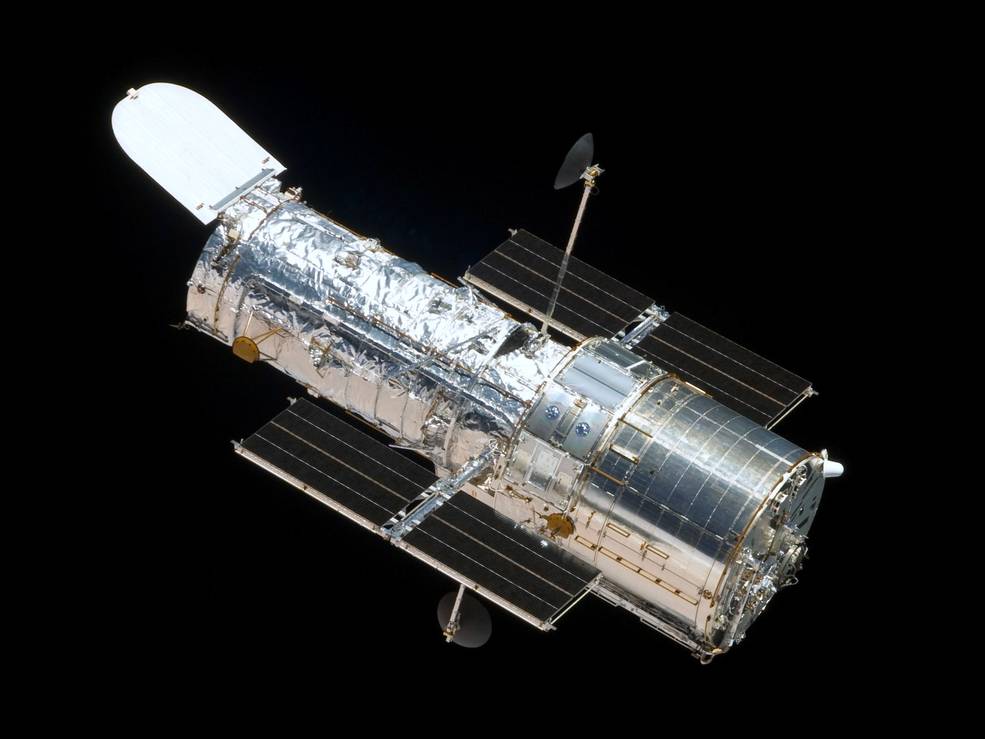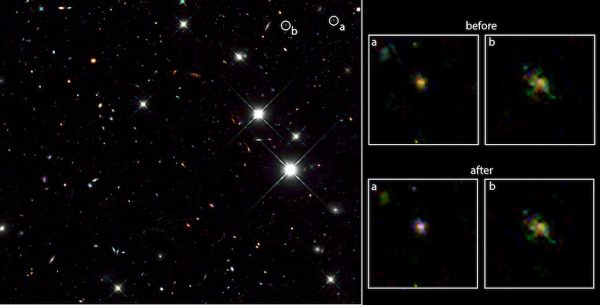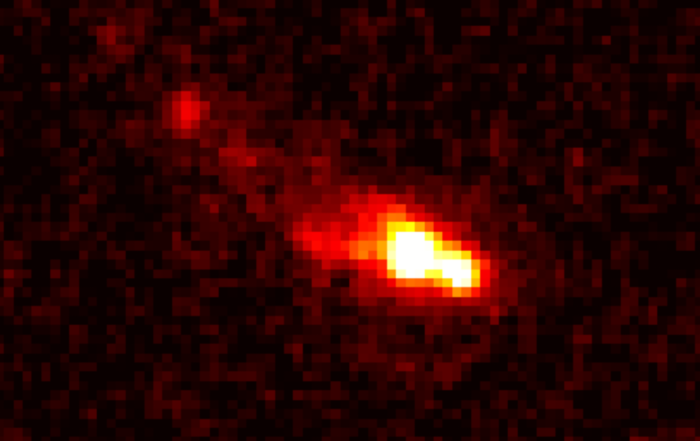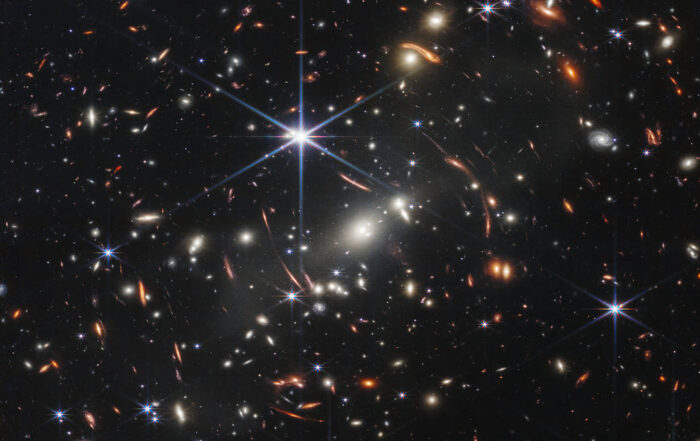The First Galaxies Project, led by CI Michele Trenti, is focussed on discovering galaxies during the first billion years after the Big Bang and characterising their properties. These goals are achieved through a combination of observations (primarily in the infrared wavelengths) by some of the most powerful telescopes (space and ground-based) with theoretical and numerical modelling of the expected properties of these galaxies. The brightest candidate first galaxies in the Universe have already been observed by the team with the Hubble Space Telescope, which are being followed up with 3D spectroscopy using the Keck Telescope in Hawaii.

Gravitational Lensing
Searching for such ancient galaxies means looking for sources so distant that their light has travelled for more than 13 billion years before it has reached us.
As the light emitted by distant galaxies passes by massive objects in the universe, the gravitational pull from these objects can distort or bend the light. This is called gravitational lensing. Weak gravitational lensing results in galaxies appearing distorted, stretched or magnified. Although difficult to measure for an individual galaxy, galaxies clustered close together will exhibit similar lensing patterns
The Search for the First Galaxies


First Galaxies leadership
Latest IN first galaxies
JWST reveals a massive and ancient galaxy that challenges our models of the young Universe
Galaxies and stars developed faster after the Big Bang than expected. Detailed pictures of one of the very first galaxies show growth was much faster than we thought An international research team have made [...]
First Images Released from James Webb Space Telescope
What will Australians see with Webb?Aussie astronomers available for interviews in Melbourne, Sydney, Brisbane, Perth and Canberra.They’re using Webb to look for the first stars, the first galaxies, baby planets, massive black holes.Media contacts: Niall Byrne, niall@scienceinpublic.com.au, [...]
Probing the outskirts of galaxies with quasars
The Monthly Media for May 2022 is from student Jennifer Shi who recently completed a vacation research scholarship at our Swinburne node. Jennifer was measuring key properties associated with known galaxy-quasar pairs, under the [...]





